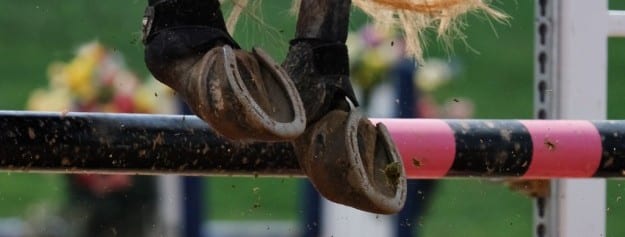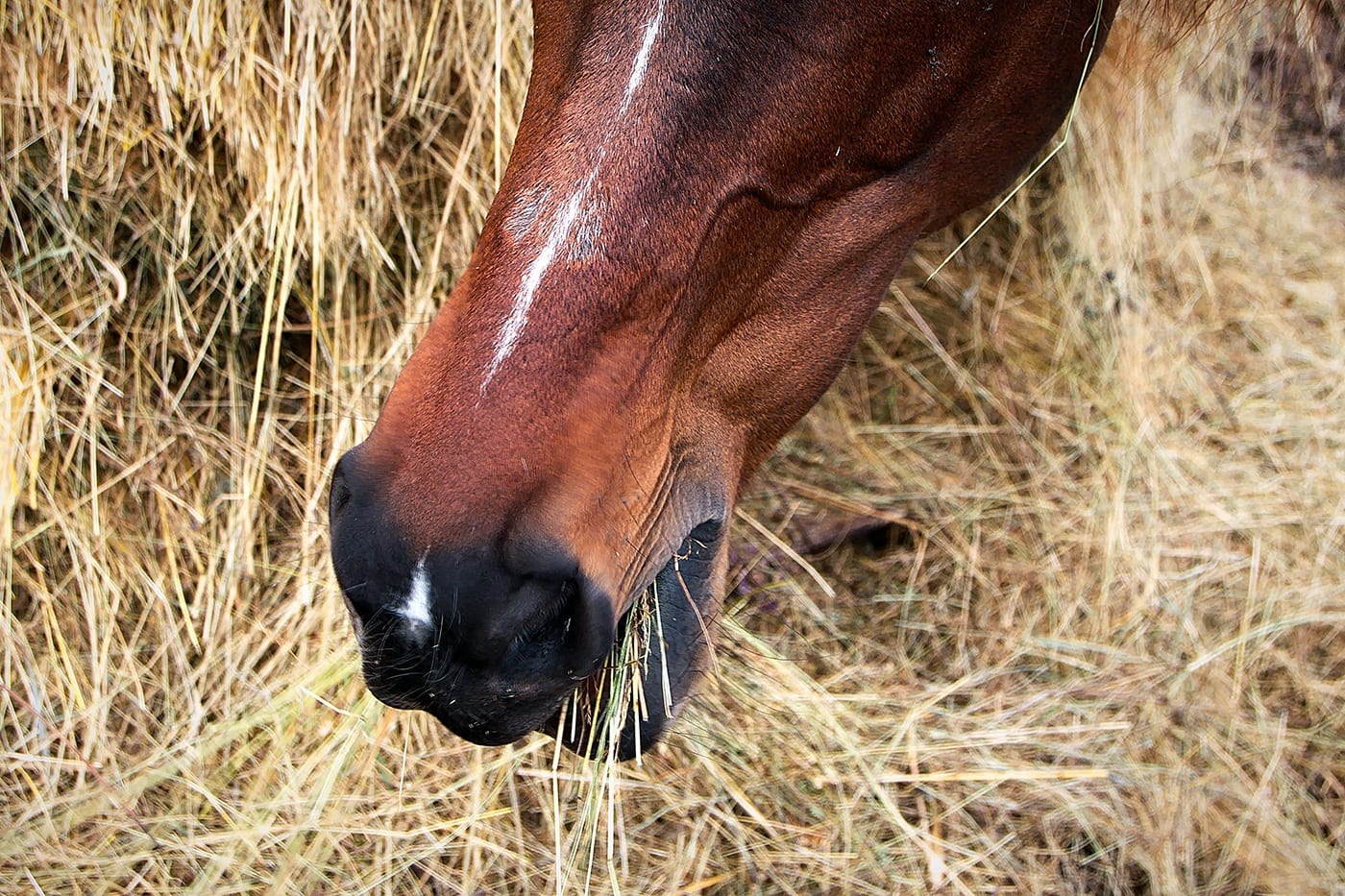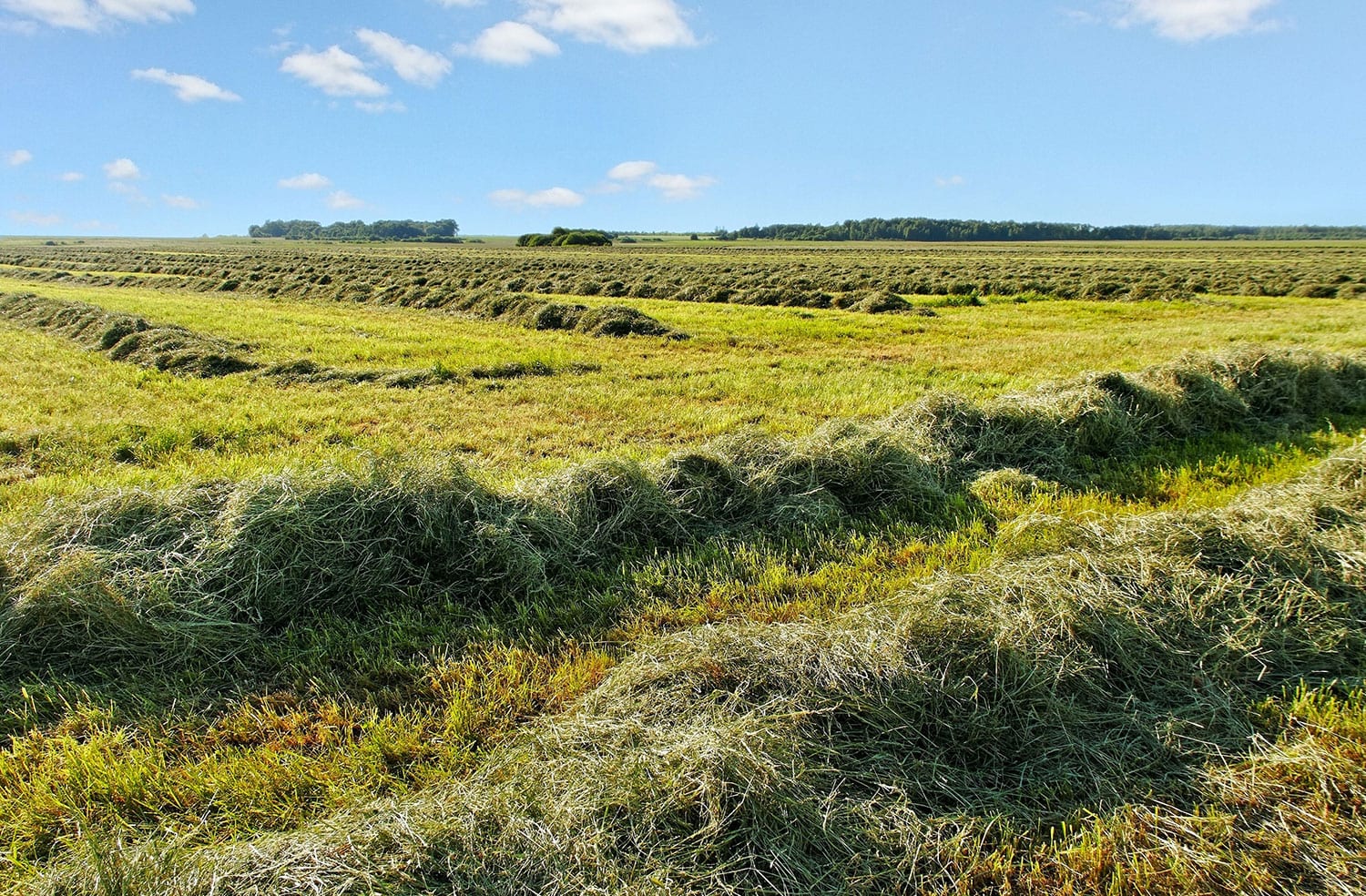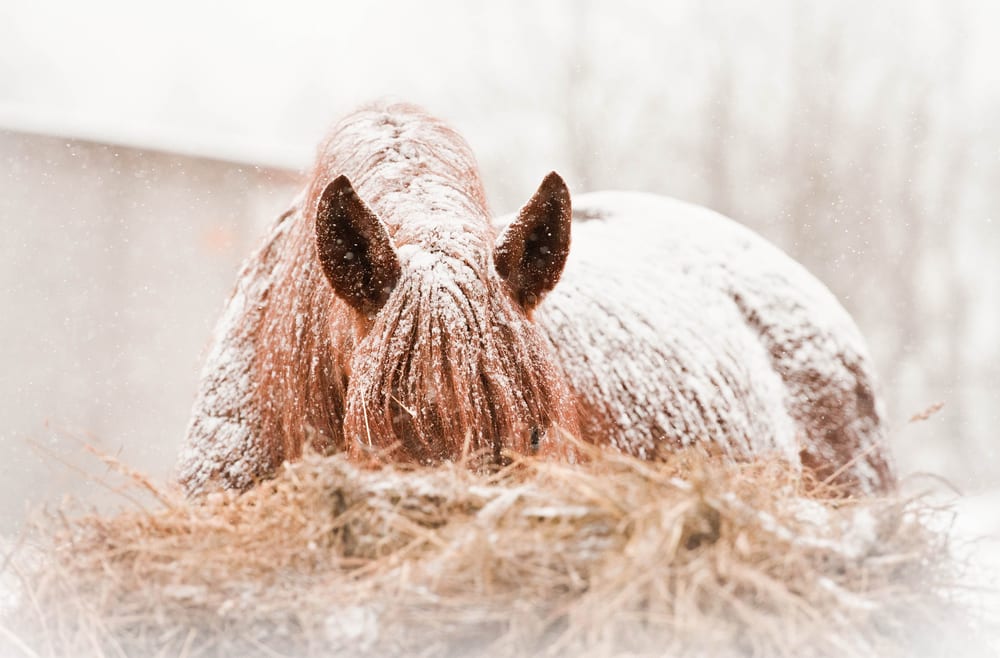
As the oft-repeated saying goes, “No Hoof, No Horse.” With hundreds of pounds carried between four comparatively small feet, healthy hooves are critical to soundness and thus your horse’s comfort and ride-ability.
There are hoof care essentials like regular farrier care and good husbandry that are absolutely central to hoof health. Other common practices such as the application of moisturizing hoof dressings and other topicals, however, may actually do more harm than good, according to research.
It’s a myth that we can improve hoof quality and growth from the outside in simply by applying topical treatments. In studies, researchers have found that moisturizing hoof dressings failed to penetrate the hoof far enough to make any difference. Specific ingredients in others actually led to dry, flaking hooves. So, these equine spa treatments we often believe will give our horses the healthiest hooves make us feel good, at best. At worst, they may actually compromise the integrity of the hoof and lead to the flaking and cracking we are trying to prevent.
Quality hoof tissue and growth actually starts internally with proper nutrition, an oft-overlooked but critical component of hoof health.
Nutrition is Key to Horse Hoof Health
Inadequate nutrition reduces the horse’s ability to both grow hoof in general, as well as to grow a strong, quality hoof. An underfed horse doesn’t produce enough energy to fuel hoof growth in addition to the obvious weight problems.
Either a lack of, or an excess of, certain essential proteins, vitamins, and minerals also restricts growth and impacts the development of quality hoof tissue. Here are a few examples:
- Excess methionine, an essential amino acid, is thought to cause the depletion of iron, copper, and zinc which may be associated with white line disease and crumbling hoof horn.
- Insufficient fats may reduce the permeability barrier of the hoof that prevents against the intrusion of bacteria and fungi.
- Excess selenium, a mineral often added to commercial feeds and available in some plants, reaches a toxic level at 2mg/kg. Selenium toxicity can lead to coronitis, bleeding coronary bands, sloughing of the hoof, and laminitis.
- Deficiency of zinc has been linked to insufficient hoof growth.
- Starch overloads in the diet, from overfeeding or rich spring grass for example, cause a build-up of lactic acid in the hindgut which may lead to laminitis.
These are just a few of the specific
ways research has shown that improper nutrition impacts horse hoof health. If your horse is struggling with weak, dry, flaking, cracked, or otherwise compromised hooves it’s important to work with your vet and farrier to evaluate whether this may be related to imbalances in her nutrition.
Gut Health is Critical to Nutrition
Also keep in mind that nutrition isn’t just about putting the right things in the right amounts into your horse. A horse’s ability to
absorb full nutrition properly from its feed depends on the
health of the entire gastrointestinal tract. The further a horse is removed from its natural environment and lifestyle, the more likely it’s digestive tract is to be stressed to the point of health risks that reduce nutrient absorption (as well as overall function and health). A horse that is
ridden regularly, travels and competes, lives in a stall for part of the day, or is fed grain-based feed is likely to have less than optimal digestive health. Take steps to
support your horse’s gi tract health for overall wellness, nutrition, and thus hoof health.
Other Aspects of Proper Hoof Health Care
In addition to fueling healthy hoof growth from the inside out through a well-balanced, appropriate diet, there are two other critical elements of hoof care to ensure:
- Routine care by an experienced farrier or trimmer. A healthy hoof isn’t about how pretty it looks on the outside, it’s about working with the horse’s individual conformation, bone structure, and growth from the inside out to encourage a well-balanced and functioning hoof.
- Management that provides a clean, healthy environment. Keep your horse’s stall and turnout areas clean and free of urine and manure. Reduce mud as much as possible. Pick hooves regularly to remove dirt, debris, and manure and to check for health.
There is certainly much more that can be said about the specifics of a healthy hoof and how it is achieved. But remember that the primary focus should always be growing a healthy hoof from the inside out with the help of
good nutrition, a good farrier, and good management. It can take over a year for a completely new hoof to grow, so be patient and avoid quick fixes.
Use hoof dressings to promote quality hoof = myth. Healthy hooves develop from the inside out, and as such proper nutrition is critical to growth and quality.
Flickr Photo Creative Commons License: carterse
 As the oft-repeated saying goes, “No Hoof, No Horse.” With hundreds of pounds carried between four comparatively small feet, healthy hooves are critical to soundness and thus your horse’s comfort and ride-ability.
There are hoof care essentials like regular farrier care and good husbandry that are absolutely central to hoof health. Other common practices such as the application of moisturizing hoof dressings and other topicals, however, may actually do more harm than good, according to research.
It’s a myth that we can improve hoof quality and growth from the outside in simply by applying topical treatments. In studies, researchers have found that moisturizing hoof dressings failed to penetrate the hoof far enough to make any difference. Specific ingredients in others actually led to dry, flaking hooves. So, these equine spa treatments we often believe will give our horses the healthiest hooves make us feel good, at best. At worst, they may actually compromise the integrity of the hoof and lead to the flaking and cracking we are trying to prevent.
Quality hoof tissue and growth actually starts internally with proper nutrition, an oft-overlooked but critical component of hoof health.
As the oft-repeated saying goes, “No Hoof, No Horse.” With hundreds of pounds carried between four comparatively small feet, healthy hooves are critical to soundness and thus your horse’s comfort and ride-ability.
There are hoof care essentials like regular farrier care and good husbandry that are absolutely central to hoof health. Other common practices such as the application of moisturizing hoof dressings and other topicals, however, may actually do more harm than good, according to research.
It’s a myth that we can improve hoof quality and growth from the outside in simply by applying topical treatments. In studies, researchers have found that moisturizing hoof dressings failed to penetrate the hoof far enough to make any difference. Specific ingredients in others actually led to dry, flaking hooves. So, these equine spa treatments we often believe will give our horses the healthiest hooves make us feel good, at best. At worst, they may actually compromise the integrity of the hoof and lead to the flaking and cracking we are trying to prevent.
Quality hoof tissue and growth actually starts internally with proper nutrition, an oft-overlooked but critical component of hoof health.



